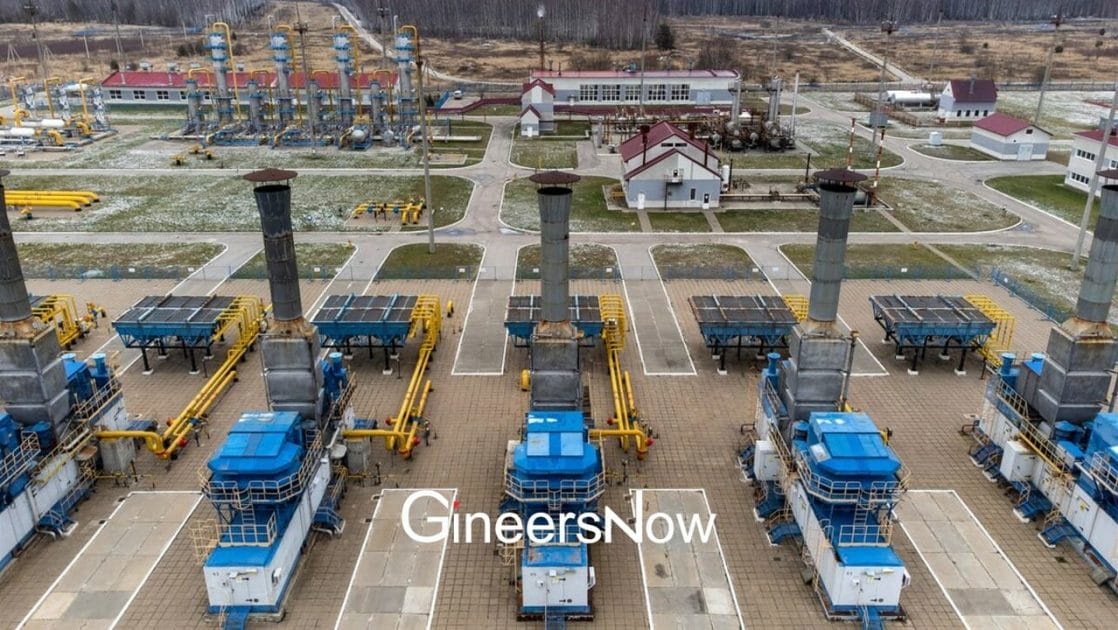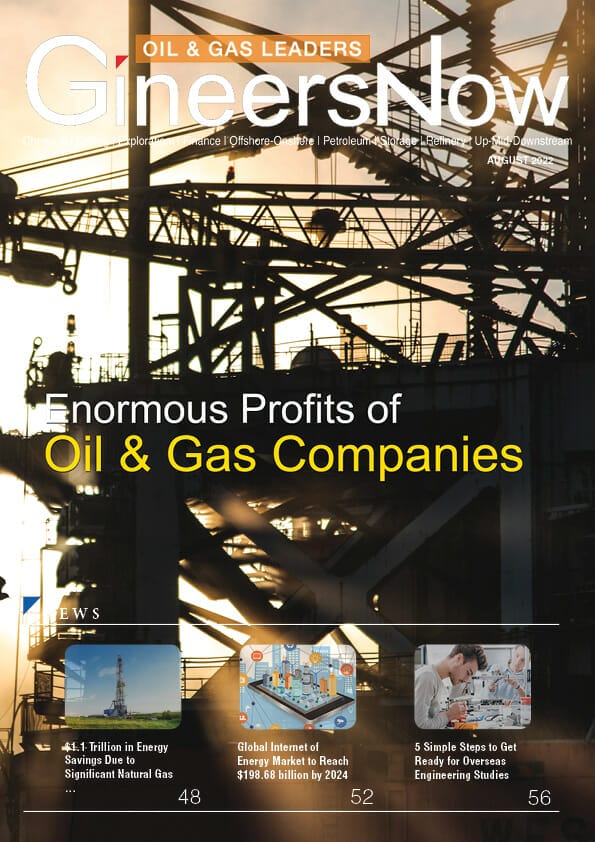Are you looking for the largest utility companies in the world? Here are the top 10 largest utility companies in the world. Find out how these utility companies became so large and how they can help your business grow. Read on to find out more about the largest utility companies in the world.
In this post, we’ll take a look at the world’s ten largest utility companies.
1. NextEra Energy, Inc. (NYSE:NEE)

NextEra Energy (NYSE:NEE) is the world’s biggest utility holding company by market capitalization, based in Juno Beach, Florida. It generated $19.2 billion in income in the 2019 fiscal year, with a 58GW power generating capacity, roughly 14900 people countrywide, and 58GW of installed capacity.
According to Fortune’s 2018 rankings, it was listed at 167th, making it one of America’s most profitable firms by revenue. Nearly 5 million customers in Florida are served by Florida Power and Light (NYSE: FPL), a subsidiary of NextEra Energy (NYSE:NEE).

The company owns and operates electric utilities and natural gas pipelines in the United States. NextEra Energy also has a significant renewable energy portfolio.
The company was founded in 1997 as a result of the merger of FPL Group, Inc. and Enron Corporation’s energy businesses. Today, NextEra Energy is the largest generator of renewable energy in the United States and one of the largest producers of electricity nationwide.
NextEra Energy’s electric utilities serve more than 9 million customers across Florida, Georgia, Iowa, New Hampshire, and Texas. The company’s natural gas pipelines serve nearly 5 million customers in six states.
2. PJSC Gazprom (MCX:GAZP)

PJSC Gazprom (MCX:GAZP) is the world’s second-largest utility business by market value and has its headquarters in Saint Petersburg, Russia’s Lakhta Center. On the Fortune 2000 list of the world’s biggest public firms, it was rated as the largest publicly listed natural gas company and the largest revenue-generating Russian company.
By 2020, PJSC Gazprom (MCX:GAZP) will have an annual revenue of $87.4 billion and an operating income of less than $8.5 billion, resulting in a dividend yield of 4.24% and a profit-to-equity ratio of 3.34% for the firm.

PJSC Gazprom is one of the largest utility companies in the world, and it is headquartered in Russia.
The company was founded in 1989, and it provides natural gas to customers all over the world.
Gazprom is also involved in other industries, such as oil and gas production, and it has a number of subsidiaries that operate throughout Europe.
3. China Yangtze Power (SSE: 600900)

China Yangtze Power (SSE 600900) is one of the Largest Utility Companies in the world.
The company has more than 12 million customers and provides electricity, natural gas, and water services.
The company has a market capitalization of more than $11 billion and its stock is publicly traded on the Shanghai Stock Exchange.

Approximately 360 million people in Central China (Hubei, Hunan, Henan, Jiangxi, and Chongqing), East China (Shanghai, Jiangsu, Zhejiang, and Anhui), and the Guangdong Province are served by the renewable energy utility company China Yangtze Power Co Ltd (SSE: 600900). The company also provides energy distribution, sales, urban water supply, sewage treatment, and recycled water services. Three hydropower projects in the Xiangjiaba, Gezhouba, and Xiluodu gorges are operated by China Yangtze Power Co. Ltd. (SSE: 600900). They generate an average of 192kWh of electricity per year.
4. Duke Energy Corporation (NYSE: DUK)

Duke Energy Corporation is one of the largest utility companies in the world. It was founded in 2006 after the merger of Duke Energy and Progress Energy. Duke Energy is headquartered in Charlotte, North Carolina, and has a workforce of over 29,000 people. The company provides electricity and natural gas to 6 million customers in the United States. Duke Energy also has operations in Latin America, Asia, and Europe.

Duke Energy Corporation (NYSE: DUK), an electric and natural gas utility holding corporation with its main office in Charlotte, North Carolina, focuses on the construction, ownership, and management of several generating facilities throughout the US via its subsidiaries. With a projected annual revenue of $21.72 billion in the fiscal year 2020, it is one of the biggest utilities in the world by market value. Duke (NYSE: DUK) has a profit-to-equity ratio of 22.94 and a 3.60 percent dividend yield.
5. The Southern Company (NYSE: SO)

The Southern Company is one of the largest utility companies in the world. The company has approximately 4 million customers and provides electricity to more than 9 million people. Southern Company also operates a telecommunications business and has a portfolio of renewable energy assets.

The Southern Company (NYSE: SO) is an American gas and electricity utility company with headquarters in Atlanta, Georgia, with administrative offices also in Birmingham, Alabama. It mainly provides services to the Southern parts of the United States. Southern Company (NYSE: SO) is the second biggest utility company in the US when it comes to the customer base, with about 29,000 workers and almost 9 million customers in 6+ states.
6. Iberdrola (BMAD: IBE)

Iberdrola is one of the largest utility companies in the world, providing electricity and gas to millions of people across Europe, North America, and South America. Iberdrola is also one of the most sustainable companies in the world, with a focus on renewable energy sources like wind and solar power. Iberdrola has been in business for over a hundred years and continues to be a leading provider of energy solutions for homes and businesses around the globe.

Iberdrola (BMAD: IBE), a multinational provider of renewable energy with headquarters in Bilbao, Spain, is the second-biggest wind power generator in terms of revenue and market capitalization. Iberdrola (BMAD: IBE) has subsidiaries in various nations, including Spain, the UK (Scottish Power), the USA (AVANGRID), Brazil (NeoEnergia), Germany, Italy, Mexico, Portugal, and France. Iberdrola has approximately 45,000 workers working throughout Europe, supporting over 31.67 million consumers. During the fiscal year 2021, it brought in $39.11 million annually. Additionally, Iberdrola (BMAD: IBE) has a profit-to-equity ratio of 16.91 and a dividend yield of 2.78 percent.
7. Dominion Energy Inc. (NYSE: D)

Dominion Energy Inc. is one of the largest utility companies in the world. It has a market capitalization of $53.2 billion and provides electricity and natural gas to more than 6 million customers in the United States. The company also operates generation, transmission, and distribution facilities across 14 states.

Dominion Energy Inc. (NYSE: D), with its headquarters in Richmond, Virginia, delivers natural gas to portions of Georgia, North Carolina, Ohio, Pennsylvania, Utah, West Virginia, and South Carolina in addition to electricity to sections of Virginia, North Carolina, and South Carolina. Additionally, it owns generating plants in Connecticut, Illinois, Indiana, Illinois, and Rhode Island. In terms of electricity generation as of 2015, coal accounted for 18%, nuclear power for 22%, oil for 9%, hydroelectricity for 12%, and natural gas for 32% of Dominion’s (NYSE: D) electricity output, with other sources accounting for the remaining 7%.
8. Enel S.p.A. (BIT: ENEL)

Enel S.p.A. is one of the largest utility companies in the world, providing electric power, gas, and water services to millions of customers. It is headquartered in Rome, Italy and employs over 100,000 people worldwide. The company has a long history dating back to 1962 when it was founded as ENEL (Ente Nazionale per l’energia elettrica) by the Italian government. Today, Enel is a public company traded on the Milan and New York Stock Exchanges. In addition to Italy, the company operates in over 30 countries across 4 continents.
Click here to read our exclusive interview with Enel Green Power CEO.

Enel S.p.A. (BIT: ENEL), a global corporation based in Italy with its headquarters in Rome, is the biggest utility provider in Europe based on market value. With a 23.6 percent ownership in the business, the Italian government is the company’s largest stakeholder. Enel (BIT: ENEL) rose to the 73rd biggest corporation in the world by revenue in 2021 with €88 billion in sales. In terms of revenue, it is the second-largest electricity corporation in the world, after China’s State Grid Corporation. With a €42.4 billion total equity base, it has a profit-to-equity ratio of 19.02 and a dividend yield of 6.21 percent.
9. National Grid Plc (NYSE: NGG)

National Grid Plc is one of the largest utility companies in the world. They provide electricity and gas to millions of customers across the United Kingdom and the United States. The company has a rich history, dating back to 1835 when it was founded as the London Gas Light and Coke Company. National Grid Plc is a publicly traded company, listed on both the London Stock Exchange and the New York Stock Exchange.

National Grid (NYSE: NGG), a British multinational electricity and gas utilities corporation with headquarters in London comes in second to last. Its principal activities are concentrated in the UK, where National Grid (NYSE: NGG) owns, manages, and runs transmission networks for electricity and natural gas. Additionally, it runs transmission lines throughout the Northeastern part of the country, giving consumers in New York, Massachusetts, and Rhode Island access to electricity and natural gas.
10. American Electric Power (NYSE: AEP)

American Electric Power is one of the largest utility companies in the world. It has more than 5.4 million customers and operates in 11 states.
The company also has a stake in National Grid Plc, a British utility company. National Grid is the largest distributor of natural gas in the United Kingdom and also owns electric and gas networks there.

American Electric Power (NYSE: AEP), which has its corporate headquarters in Columbus, Ohio, is one of the largest investor-owned electric utility companies in the United States by revenue, servicing over five million consumers throughout 11+ states. Because of its 38,000 MWs of generating capacity, it is also among the biggest power producers in the country. American Electric Power (NYSE: AEP), with various companies spread across numerous states, was included as the 185th biggest U.S. firm by revenue on the Fortune 500 list.
What exactly are utility companies?
When most people think about utilities, they think about the companies that provide electricity, natural gas, or water to their homes and businesses. But what are utility companies, exactly? Utility companies are businesses that provide essential public services, such as electricity, water, and natural gas. They are typically regulated by state governments and must meet certain safety and quality standards. In addition to providing essential services, utility companies also play an important role in the economy by creating jobs and generating tax revenue.

The Different Types of Utility Companies
There are different types of utility companies. The three most common types are investor-owned, cooperatives, and municipal utilities.
Investor-owned utility companies are owned by shareholders who expect to make a profit. Cooperatives are owned by the people who use the services, and municipal utilities are owned by the city or town where they are located.
Each type of company has its own advantages and disadvantages. Investor-owned companies tend to be more efficient because they have to compete with other companies in the market. Cooperatives can be more responsive to customer needs because they are owned by the customers. Municipal utilities often have lower rates because they do not have to make a profit.

Pros and cons of having a large number of utility companies
There are a few pros and cons of having a large number of utility companies. The pros are that it can lead to more competition, which could lead to lower prices for consumers. Additionally, it can help spur innovation in the industry as companies compete to offer the best products and services.
The cons of having a large number of utility companies are that it can be confusing for consumers, who may not know which company to choose. Additionally, it can lead to higher rates as companies try to recoup their costs through increased prices. Finally, it can also lead to less reliability as companies may not have the resources to meet demand during peak times.

The history of utility companies
The first utility companies in the United States were established in the early 1800s. These companies provided water and street lighting services to their local communities. In 1878, the first electric utility company was established in the United States. This company provided power to a small community in Massachusetts.
Over the next several decades, utility companies grew rapidly and began to provide a variety of services, including electricity, natural gas, and telephone service. In the early 20th century, many states began to regulate these companies by establishing laws and regulations that govern how they operate.
Today, utility companies are still a vital part of our economy and provide critical services to millions of people across the country. While technology has changed dramatically over the years, these companies have continued to play a key role in our society.

The role of utility companies today
Utility companies are an important part of our society and our economy. They provide a necessary service that we all rely on. They are responsible for delivering electricity, natural gas, and water to our homes and businesses.
In recent years, utility companies have come under fire for their high rates and for their role in the climate change debate. Some people believe that utility companies are contributing to climate change by producing too much carbon dioxide. Others believe that the high rates charged by utility companies are unfair and are hurting the economy.
Despite these criticisms, utility companies remain an important part of our society. They provide a necessary service that we all rely on. And they play a critical role in the economy, delivering essential services to businesses and households across the country.

The changing landscape of the utility industry
The utility industry is changing, and companies are starting to realize that they need to adapt in order to survive. Consumer behavior is changing, and people are now looking for more options when it comes to their energy needs. Utilities are starting to offer new services and products, and they are also working to improve their customer service. They are also investing in new technologies, which will help them to become more efficient and reduce their costs.
Services offered by utility companies
Utility companies provide a variety of services to their customers. These services may include, but are not limited to, the following:
- Electricity
- Gas
- Water
- Waste collection
- Telecommunications
Some utility companies may also offer additional services, such as home security or car insurance. It is important for customers to understand what services are offered by their utility company, and how to access these services.

The Future of Utility Companies
As the world becomes more and more digital, it’s important for companies to keep up with the latest technologies. Utility companies are no exception. They must find ways to provide their customers with the best services possible while keeping up with the ever-changing landscape.
One way that utility companies are preparing for the future is by embracing new technologies. For example, many companies are investing in smart meters. These meters allow customers to track their energy usage in real time, which can help them save money on their bills.
Another way that utility companies are preparing for the future is by expanding their services. In addition to providing electricity and water, many companies are now offering broadband internet and cable TV services. This allows customers to bundle all of their services into one convenient package.
Finally, utility companies are preparing for the future by becoming more environmentally friendly.

Conclusion: Largest Utility Companies
The top 10 largest utility companies in the world are all massive conglomerates with a wide range of holdings. While their size and scope may be intimidating, they are essential to the proper functioning of our economy and society. If you’re looking for a career in the utilities industry, there is no better place to start than one of these juggernauts.
In conclusion, the top 10 largest utility companies in the world are impressive feats of engineering and provide a vital service to billions of people. These companies are constantly expanding and innovating, and are crucial to the future of our planet. Thank you for reading!
Click below to read the magazine: Largest Utility Companies
Click here to download the magazine: Largest Utility Companies
Click here to read on Yumpu: Largest Utility Companies











